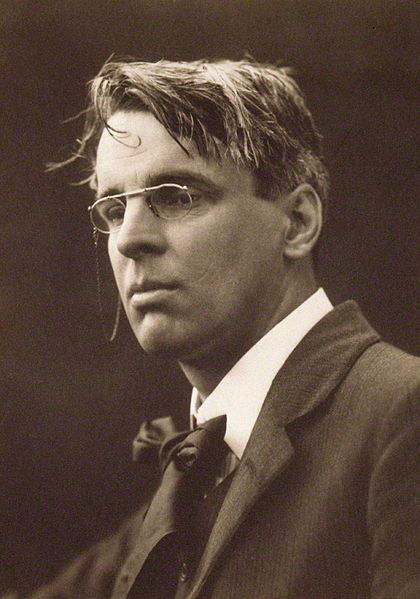94 Biography

William Butler Yeats was born on June 13, 1865, in Dublin, Ireland. His father, John, was a lawyer, but an artist at heart, and he left his law practice to become a portrait painter. His mother was Susan Pollexfen, whose family had prosperous business interests in milling and shipbuilding in Sligo, on Ireland’s northwest coast.
In search of commissions, Yeats’s father moved the family to London, which set a pattern for the rest of Yeats’s life as he would move regularly between Dublin to London, summering in Sligo when he was a child, and at his friend Lady Gregory’s estate Coole Park when he was an adult, rarely settling in one place for long, even after he married and raised a family.
Yeats attended high schools in both London and Dublin. College was two years—1883 to 1885—at Dublin’s Metropolitan School of Art (now the prestigious National College of Art and Design), an obvious choice for a young man from one of Ireland’s famously artistic families: his brother Jack would become a renowned painter; one of his sisters was an art teacher; and the other an accomplished designer, a protégé of the great William Morris, in whose studio she worked.
But Yeats soon recognized that poetry was his true calling. He established himself as a man of letters, and, for the next 50-plus years of his life, he worked tirelessly as a poet, playwright, and literary critic. Three themes dominate his work: his determination to use his gift in the interest of revitalizing Irish culture, his personal search for a spiritual identity, and his unrequited love for Maud Gonne.
Maud was the daughter of a British army officer but, raised in Ireland, she adopted the cause of Irish independence and became a leading spokesperson for the movement. From the day they met in 1889, she and Yeats were lifelong friends. She attended meetings of the mystical occult societies Yeats was always drawn to, and he attended her political rallies. A trained and gifted actress, she took the lead in his 1902 play Kathleen ni Houlihan. She broke his heart at least twice, first when she confessed to him that her two children (a son, Georges, who died as an infant, and a daughter, Iseult) were not, as she had claimed, adopted, but her natural children with a Paris journalist, married and much older than she. Some years later, she married John McBride, a major in the Irish Republican Army. Even after Yeats married in 1921 and had his own family, he references in his poetry his unrequited love for Maud. Among the poems we anthologize here, Maud appears in “No Second Troy,” “Easter 1916,” and “A Prayer for My Daughter.”
“The Second Coming,” “Leda and the Swan,” “Among School Children,” “Sailing to Byzantium,” and “Byzantium” touch on Yeats’s interest in discovering and promoting a system of spiritual enlightenment, which would explain the cycles of history, death and reincarnation, and the relationship of the mind and body to the spirit. For much of his life, Yeats was drawn to and took an active role in mystical and occult societies, such as the Order of the Golden Dawn. His wife, George, claimed the gift of automatic writing, the ability to write down information the spirit world dictated to her, and Yeats would claim that much of his philosophical work, A Vision, published in 1926, was based upon information he acquired from the spirit world, which spoke to him through George.
Yeats also used his work to promote the cause of Irish independence, his contribution being a determined effort to forge a distinctly Irish culture, especially a literature. His work as a playwright, though less successful than his poetry, occupied much of his energy throughout his life. He not only wrote but helped to produce the plays of others: J. M. Synge and, later, Sean O’Casey were the best of the playwrights whose work Yeats promoted. With the tireless help from his friend Lady Augusta Gregory, he founded the Irish Literary Theatre, which became the Abbey Theatre in 1904 and which thrives to this day.
As the years went by, Yeats’s fame and status as Ireland’s leading man of letters grew. He won the Nobel Prize for literature in 1923, and he became a senator in the Irish Free State after Ireland won conditional independence from Great Britain. He continued to produce astonishing poetry. His last poems, represented here by “The Circus Animal’s Desertion,” reveal a diminished interest in the search for a utopian vision of spiritual enlightenment that Byzantium represented for him. Instead, he writes of his need to re-immerse himself in the real world of his politically unstable nation and in the pains that love sometimes entails, “the foul rag and bone shop of the heart.”
Typically energetic to the end, Yeats was still writing new poems at the time of his death, in France, on January 28, 1939.

